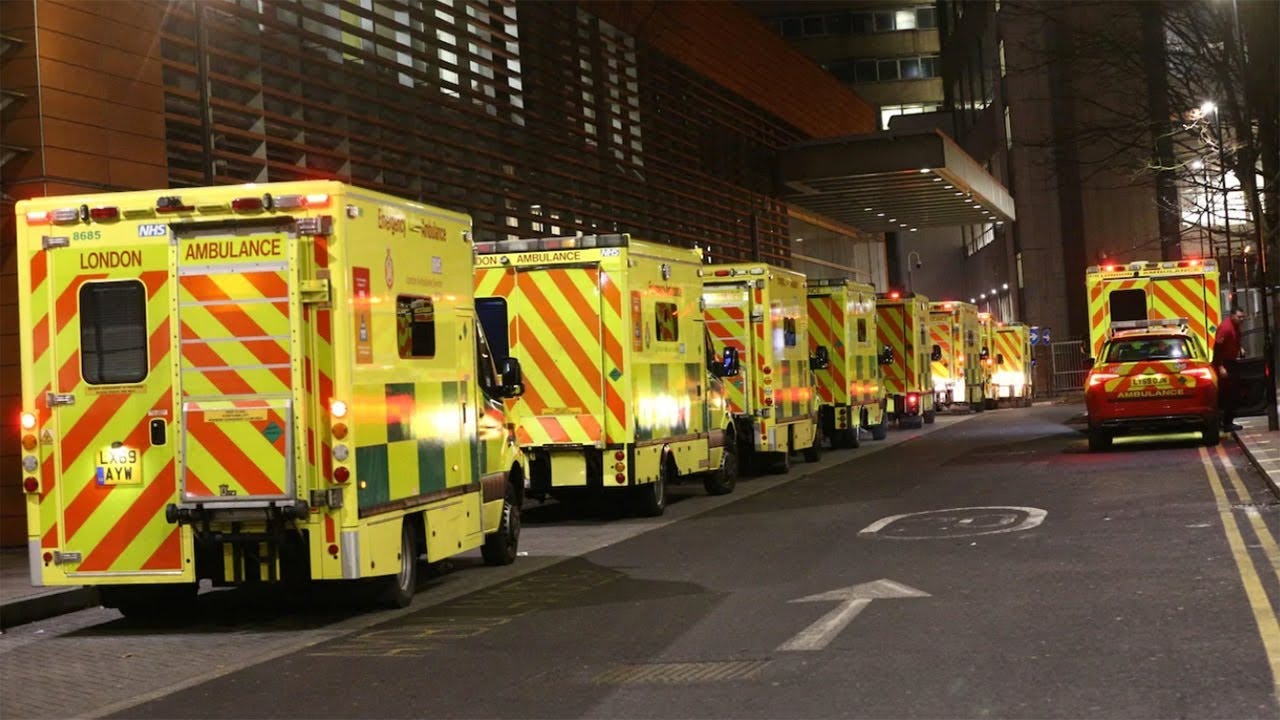The NHS is currently enduring one of the worst crises in its history. The pictures of ambulances backed up outside hospitals and patients sleeping on floors are scary given all of us rely on NHS emergency care. While many patients are still getting good care, and parts of the system are operating fine, the data shows the problems are systemic and not being sensationalised. In November alone people waited more than four hours to be seen in A&E over 600,000 times. Almost 40,000 people had to wait over 12 hours for an emergency admission, something that barely ever happened pre-pandemic. The average ambulance wait time for a category 2 condition – like a stroke or serious chest pain – is now 50 minutes, up from 20 minutes pre-pandemic. There were 1,592 (20%) more excess deaths in the week ending 30th December than you’d expect from the 5 year average. Unlike other examples of state failure, say lengthy court delays or the disaster of the children’s home market, this one affects so many people that it will have a substantial impact on the government’s chance of re-election
But this piece is about why it’s happening, rather than the politics, and whether the government has any chance of reversing the spiral we’re in by next winter and beyond.
We can immediately dismiss some of the popular answers on social media as to the causes. No, the Tories are not engaged in a conspiracy to run down the NHS in order to privatise it. If they were it would be the dumbest conspiracy ever given voters’ views on the idea. Nor is just about austerity. Long-term underinvestment is a big part of the story but it was not unreasonable for the government to think the additional funds they put into the NHS in 2019 and during covid should have left it in a more stable place than this. It’s not about lots more people being sick either. A&E numbers are up marginally in line with small rises in recent years, but nothing unusual (1.1% higher in November than the equivalent month in 2019). There are not more ambulance requests than normal. The level of respiratory infections is adding pressure but that’s not uncommon for winter.
So what’s going wrong?
What we have is a crisis of capacity. This has been caused by multiple factors. The first and most obvious is bed numbers, which is driving a big fall in the number of hospital admissions and treatments (except for cancer) and pushing waiting lists ever higher. Between 1987 and 2019 the total number of NHS hospital beds fell by 53% – from 299,400 to 141,000. In fact we have fewer beds now than before the NHS even existed. A chunk of those cut were mental health beds, scrapped as part of a shift to care in the community, but around 70,000 were general and acute beds. This was a deliberate strategy to minimise waste and reduce the time patients were spending in hospitals but in retrospect it’s obvious it went too far. We are now well out of line with comparable countries: France has almost three times as many, and Germany four times.
Keep reading with a 7-day free trial
Subscribe to Comment is Freed to keep reading this post and get 7 days of free access to the full post archives.




